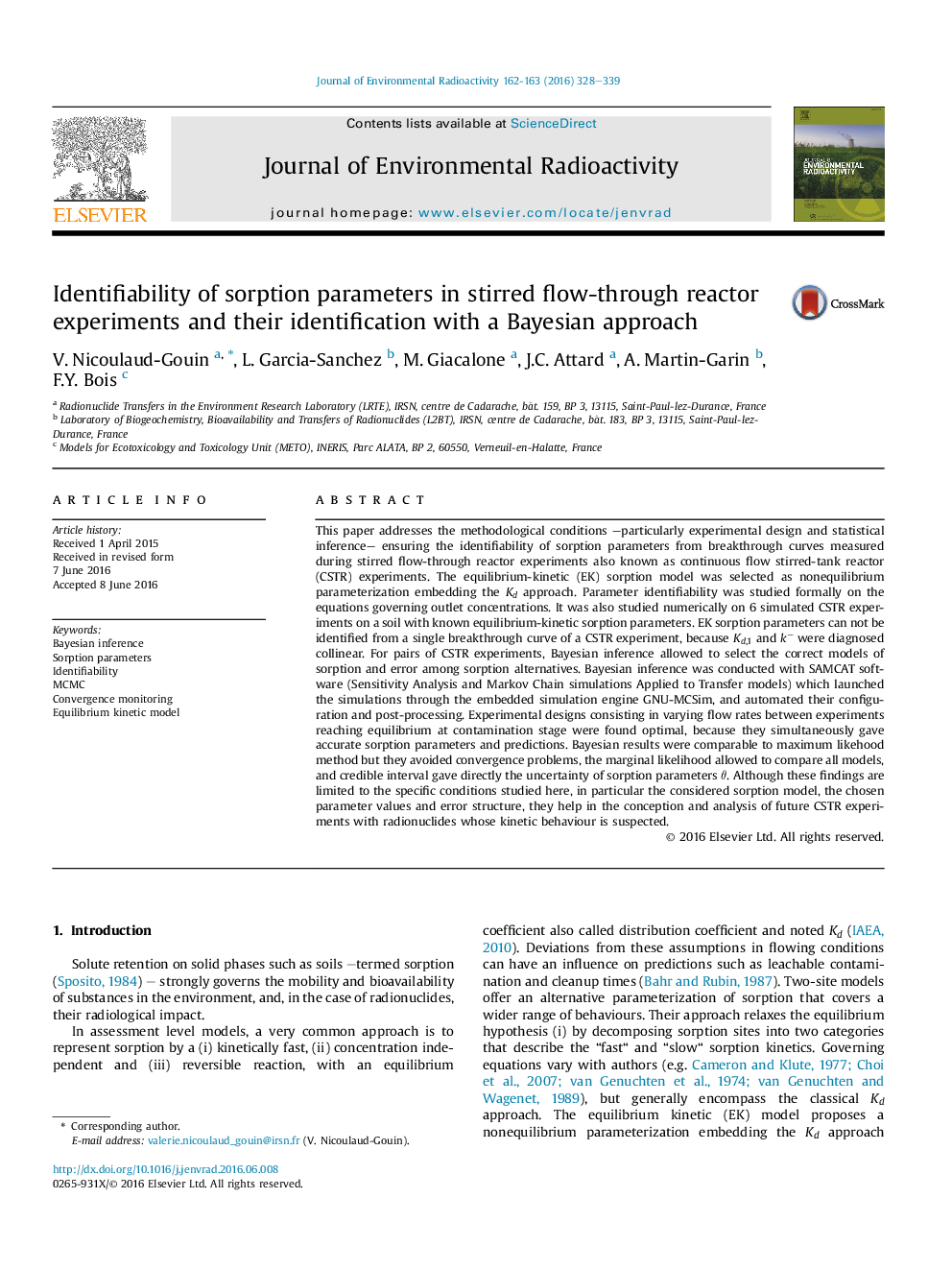| Article ID | Journal | Published Year | Pages | File Type |
|---|---|---|---|---|
| 8081655 | Journal of Environmental Radioactivity | 2016 | 12 Pages |
Abstract
This paper addresses the methodological conditions -particularly experimental design and statistical inference- ensuring the identifiability of sorption parameters from breakthrough curves measured during stirred flow-through reactor experiments also known as continuous flow stirred-tank reactor (CSTR) experiments. The equilibrium-kinetic (EK) sorption model was selected as nonequilibrium parameterization embedding the Kd approach. Parameter identifiability was studied formally on the equations governing outlet concentrations. It was also studied numerically on 6 simulated CSTR experiments on a soil with known equilibrium-kinetic sorption parameters. EK sorption parameters can not be identified from a single breakthrough curve of a CSTR experiment, because Kd,1 and kâ were diagnosed collinear. For pairs of CSTR experiments, Bayesian inference allowed to select the correct models of sorption and error among sorption alternatives. Bayesian inference was conducted with SAMCAT software (Sensitivity Analysis and Markov Chain simulations Applied to Transfer models) which launched the simulations through the embedded simulation engine GNU-MCSim, and automated their configuration and post-processing. Experimental designs consisting in varying flow rates between experiments reaching equilibrium at contamination stage were found optimal, because they simultaneously gave accurate sorption parameters and predictions. Bayesian results were comparable to maximum likehood method but they avoided convergence problems, the marginal likelihood allowed to compare all models, and credible interval gave directly the uncertainty of sorption parameters θ. Although these findings are limited to the specific conditions studied here, in particular the considered sorption model, the chosen parameter values and error structure, they help in the conception and analysis of future CSTR experiments with radionuclides whose kinetic behaviour is suspected.
Related Topics
Physical Sciences and Engineering
Energy
Nuclear Energy and Engineering
Authors
V. Nicoulaud-Gouin, L. Garcia-Sanchez, M. Giacalone, J.C. Attard, A. Martin-Garin, F.Y. Bois,
